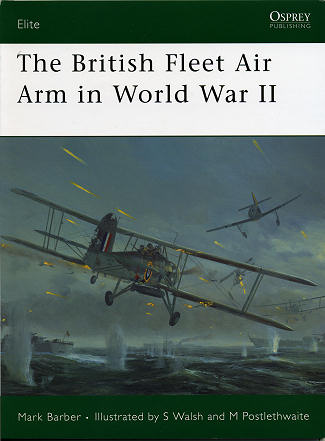 By the
time WWII arrived, the British Fleet Air Arm has been suffering under the
neglect of the RAF for a number of years. Their equipment was obsolete and even
new aircraft were obsolescent when they entered service. For some unusual
reason, it was felt that fleet defense fighters (like the Fulmar) needed to have
a radio operator, making the aircraft too unwieldy when it came to attacking
most enemy fighters. Fortunately the US was able to supply more capable
aircraft, while some RAF types such as the Hurricane and Spitfire were modified
for shipboard use.
By the
time WWII arrived, the British Fleet Air Arm has been suffering under the
neglect of the RAF for a number of years. Their equipment was obsolete and even
new aircraft were obsolescent when they entered service. For some unusual
reason, it was felt that fleet defense fighters (like the Fulmar) needed to have
a radio operator, making the aircraft too unwieldy when it came to attacking
most enemy fighters. Fortunately the US was able to supply more capable
aircraft, while some RAF types such as the Hurricane and Spitfire were modified
for shipboard use.
It is also interesting to note that a goodly number of the
pilots aboard Royal Navy carriers were from the RAF. Even more interesting is
the knowledge that by the end of the war, a full 25 percent of all air crews
were from New Zealand! For purists, I should also mention that this particular
branch was not officially called the FAA during WWII, but called the Air Branch,
a title that has been generally ignored by most!
This book covers the origins of the FAA and some of the
background history prior to WWII. The recruitment and training of the various
job skills of the FAA from pilots to mechanics to the meterologists to the women
who worked in the FAA are fully covered. There is also a section on command
struction that includes unit composition and the way FAA squadrons were
numbered.
This is followed by a brief look at the various campaigns
that were fought by the FAA from Norway to the Mediterranean to the Far East.
This is concluded by a look at the various tactics used by torpedo aircraft,
bombers and fighters. All of this is superbly illustrated by a selection of
images by both the illustrators and the collection at the Fleet Air Arm Museum.
Of particular interest to figure modelers are the number of illustrations that
show the various types of uniforms worn during this period of time.
It is a book that should find interest with all readers. A book you'll enjoy reading and one that I can recommend to you
along with any other Osprey title.
June 2008
For more on the complete line of Osprey books,
visit www.ospreypublishing.com. In the US, it is
Osprey Direct at 44-02 23rd St, Suite 219, Long Island City, NY 11101., where you can
get a catalogue of available books.
If you would like your product reviewed fairly and quickly, please contact
me or see other details in the Note to
Contributors.
 By the
time WWII arrived, the British Fleet Air Arm has been suffering under the
neglect of the RAF for a number of years. Their equipment was obsolete and even
new aircraft were obsolescent when they entered service. For some unusual
reason, it was felt that fleet defense fighters (like the Fulmar) needed to have
a radio operator, making the aircraft too unwieldy when it came to attacking
most enemy fighters. Fortunately the US was able to supply more capable
aircraft, while some RAF types such as the Hurricane and Spitfire were modified
for shipboard use.
By the
time WWII arrived, the British Fleet Air Arm has been suffering under the
neglect of the RAF for a number of years. Their equipment was obsolete and even
new aircraft were obsolescent when they entered service. For some unusual
reason, it was felt that fleet defense fighters (like the Fulmar) needed to have
a radio operator, making the aircraft too unwieldy when it came to attacking
most enemy fighters. Fortunately the US was able to supply more capable
aircraft, while some RAF types such as the Hurricane and Spitfire were modified
for shipboard use.